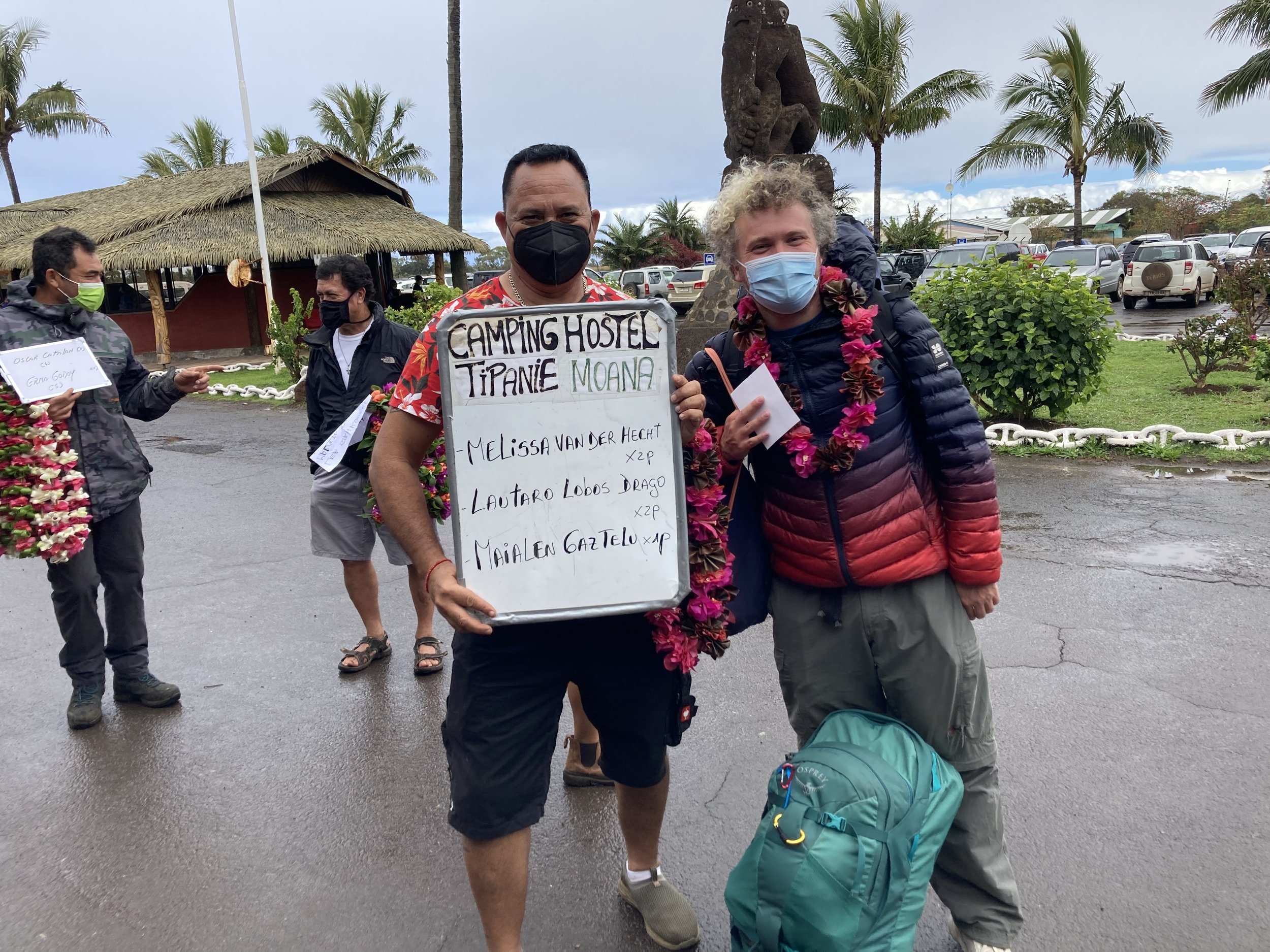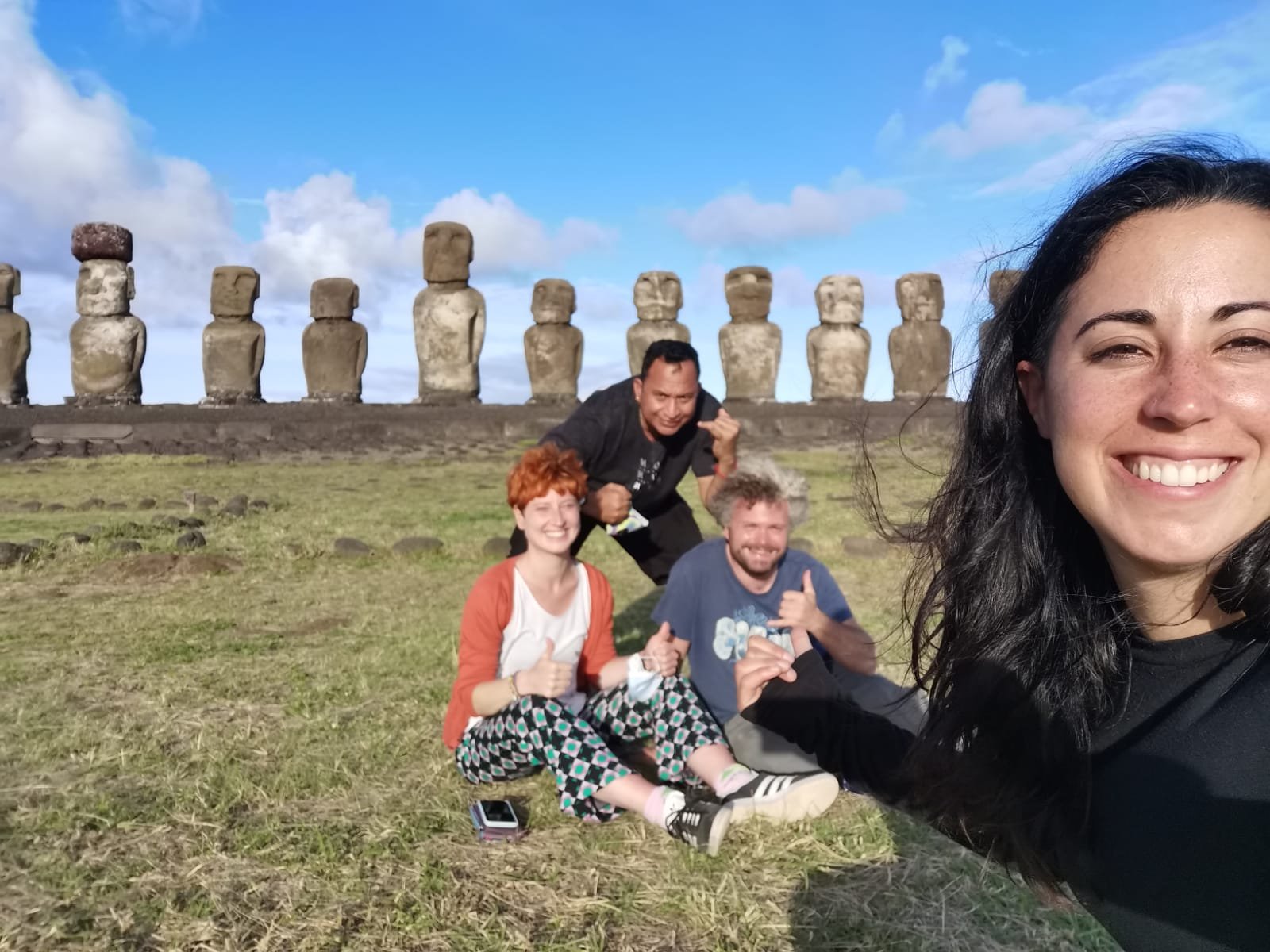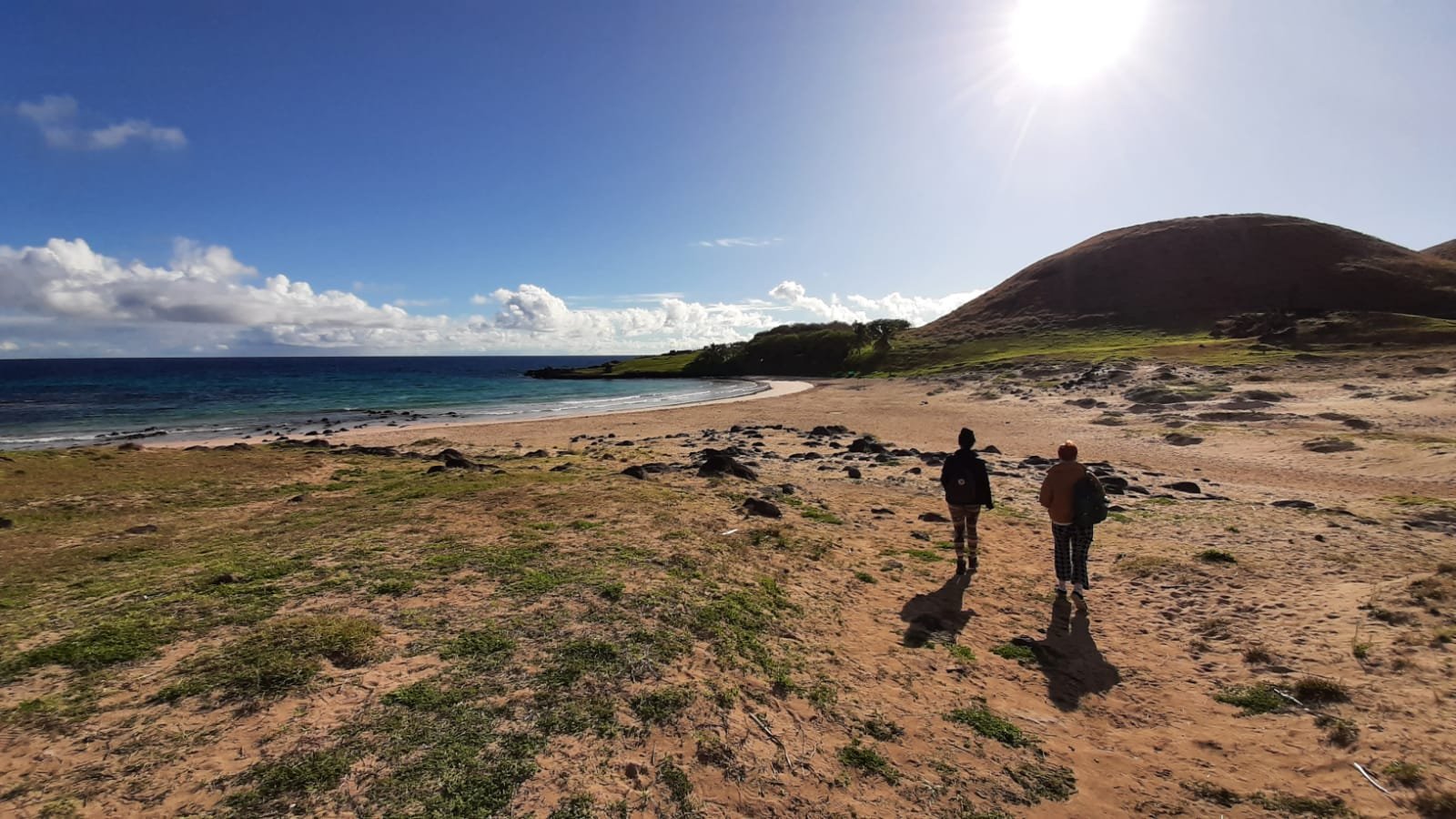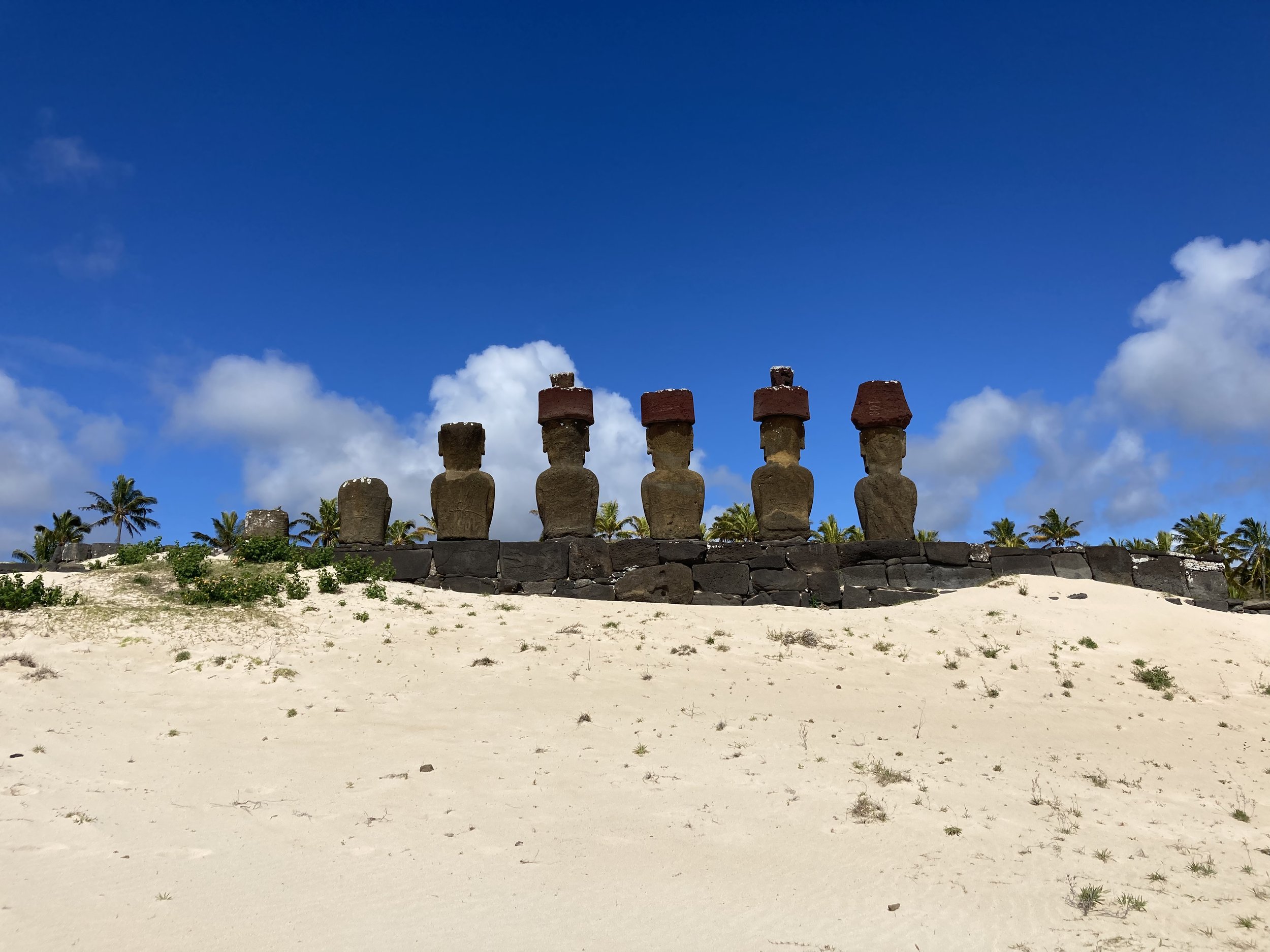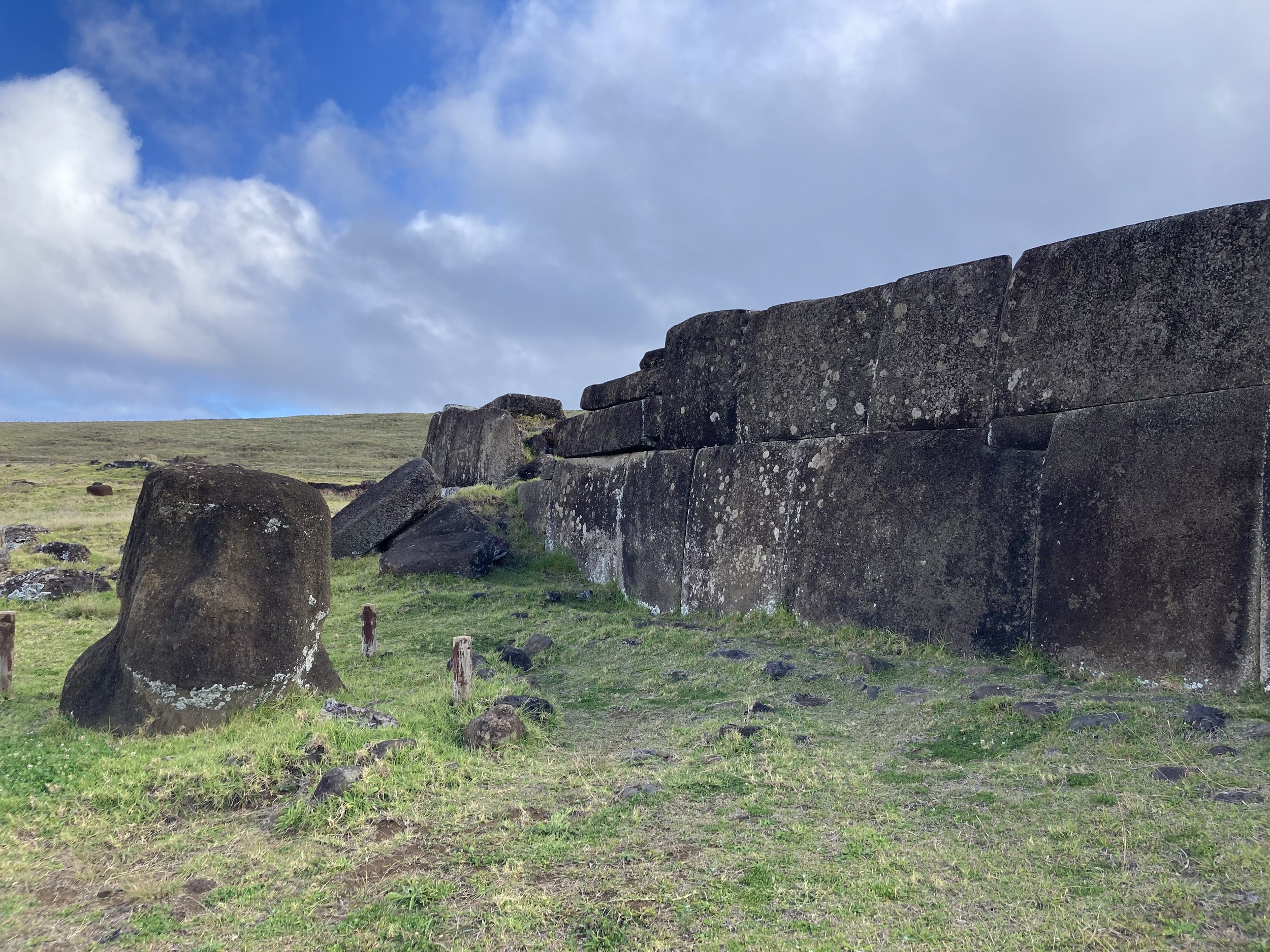Rapa Nui (Easter Island)
I don’t even know where to start because this was such a surreal, magical, and absolutely astounding place. I’ve known about Rapa Nui since primary school (shout-out to Mr Cooper and his self-written school plays at Greycotes) and never in my life thought I would get to go to such a mysterious and faraway place.
[Side note: Rapa Nui is the proper name of the island, “Easter Island” was a name given by a Dutch explorer in the 1700s who “discovered” it on Easter Day. Everyone on the island and in Chile knows it by Rapa Nui.]
A trip to Rapa Nui was never part of our original plan but I happened to read that they were going to reopen flights after COVID on 4th August. And we were going to get to Chile - and to Santiago which is the only place flights are currently departing from - at that exact time. So this really was a once in a lifetime experience for us and something I was determined not to miss. So, two extortionately expensive flights later, we arrive in paradise…
As soon as we landed, with the trees and land shrouded in mist just adding to the mystique, the whole plane was greeted by people playing music and cheering and waving to welcome us. Every single person who got off the plane had a lei put around their neck; a lei made from REAL and delicious smelling flowers. It was truly a celebration of our arrival and just set the tone for how genuinely welcoming the entire island would be.
What I didn’t know or expect about Rapa Nui was its culture: Polynesian. Although technically part of Chile, it’s not Chilean at all (and in fact most locals don’t like Chile), it’s a proper Polynesian island with the warmest attitude you could imagine and with colours somehow more vibrant than anywhere else I’ve been. Life is all about enjoying everything, sharing everything, and being kind to everything around, whether people, dogs, plants, or the island itself. I’ve never felt so comfortable and welcomed as a tourist. Or so unbelievably lucky to be in a land of storybooks and see it with my own eyes.
We crammed a lot into our five days on the island, and we still didn’t have time to see everything. The island itself is small - you can drive from one end to the other in an hour or so - but there is so much history as well as modern culture in every spot. And we got SO lucky: pre-COVID, there were 3 flights to Rapa Nui a day, with 70,000 tourists visiting the island every year. Right now, there are two flights a week. And we were there on only the third week that flights resumed. And we were basically the only non-South American people on the plane, everyone else was Chileans going over to see family and friends for the first time since before the pandemic. This meant every single place we went to on the island was empty when usually it would be full of tourists, which just added to the magic. You could really get lost in your thoughts whilst looking at everything around you.
Of course the most famous thing, and what I was most excited to see, were the moai - the heads. There are almost 1,000 of them spread pretty much everywhere across the island, in various states of erosion and restoration. There are the famous ones, which I will mention later, and there are those you accidentally stumble upon that are just tucked near the shore or in a field or by the side of the road. You can’t really travel far without seeing one and trust me, each one you see is just as magical as the first or the most famous!
Not long after landing we set off to explore the town. There is just one town on the island, Hanga Roa, which is one street with cafes and restaurants and shops selling either fruit and veg, or colourful clothes. As just one example of countless acts of kindness towards us, on our way to town a guy on a moped stopped next to us just to say “welcome to Rapa Nui!” He told us to go and watch the sunset at Tahai (one of the famous moai sites) and gave us his number and told us to call him if we ever got stuck. Then he drove off. So we duly followed his suggestion, happened upon a moai on the shore two minutes later, and then walked through a field of horses by the sea (I told you this island was magical) to watch an unforgettable sunset.
Standing near the moai gives you goosebumps. They are huge and domineering and very human, and you can feel the history and imagine hundreds of generations of people before you looking at the same moai. Almost all of them face inland rather than out to sea, and each one was built in honour of a nobleman (or woman) when they died, as a way to safeguard their spirit. The first moai were actually quite small and rough but as time went on and they perfected the art, each moai got replaced by a bigger and bigger and more detailed one; so around the island you also see the old and superseded moai discarded here and there.
A large part of the history of Rapa Nui remains a mystery and walking around the island you’re filled with questions. Who were the individuals the moai represent? We don’t know. Where did the first settlers in Rapa Nui come from? Don’t know. Did they find the island by accident? Don’t know. What we do know is that Europeans “discovered” the island in the 1700s, after it had already been inhabited for centuries, and brought disease, Peruvian slave traders took the majority of the men from the island, and over the course of a few years the population of Rapa Nui was decimated.
It’s not just outsider influence that destroyed the island though. Warring tribes on the island actually caused every moai to fall; so walking around the island now, you see more moai lying on their fronts or backs than you do upright, and those that you see upright have been restored since. You start to train your eyes to differentiate fallen rocks between moai, and just rocks on the ground.
Since COVID, you need a guide or a local person from Rapa Nui to enter the most well known spots - invariably costing more money on already very expensive island. Our lovely hostel host Benjamin, a local, took us out with Maia, another guest who was camping in the hostel (and from Basque Country so spoke much better Spanish than us!). We went to Rano Raraku, the volcano where the moai are born and the most famous part of the island. Imagine a moai lying on its back: this is how it comes to life. The moai’s fronts are carved into the rock near the top, they’re chunked and chiselled away from the volcano, and pushed down the side of the volcano so they slide to the bottom. Here they pile up rock and dirt behind the moai to lift it up so they can then carve its back. Then once it’s finished, it’s taken away to wherever on the island it needs to go.
This means walking around Rano Raraku, you see moai at very stage of creation. Those that broke as they slid down the hill and were left there, those at the top halfway through carving, and those at the bottom in perfect condition, their bodies buried in several feet of earth that has accumulated over the years, with just their heads sticking out. At some point in the past, it’s thought it was a sudden decision to stop making moai so about half of the moai on the island are still there, waiting for their final resting place and suddenly abandoned.
In such a place as Rapa Nui, with next to no pollution (including light, amazing view of the stars every night), the sea was gorgeously clear. We spent one afternoon scuba diving - a first for me - and saw the most gorgeous crazy-coloured tropical fish [J: it was the BEST fish I’ve ever seen], not to mention the giant turtles hanging out on the shoreline. I could not have felt more removed from London, or more like I was living in a BBC documentary about life on one of the most remote places on earth.
On another day we rode horses up to the top of the highest volcano on the island (507m) that had an almost perfect 360-degree view across the entire coastline. I have never seen so much sea in my life! It made me feel so small and a teeny part of a giant planet, a bit like that feeling you get when you look up at the stars. It was very humbling.
Everyone had said we must see sunrise at Tongariki, a famous spot with 15 moai all lined up on a platform by the sea (but looking inland). Along with Maia, we rented a car and set off at 530am, Jeremy driving in the pitch black with the rest of the island asleep but every single star visible and gorgeous in the night sky. We parked up nearby, slid through the gap inn the fence, and discovered that you were supposed to have a guide to enter the area; so after being escorted out we sat on a wall nearby and watched the day begin. At first you could just about make out that there was something over there in the distance, but as the light slowly grew you started to see the shapes take huge, human form, completely silhouetted against the backdrop of the sunrise.
On our last day we went to Vinapu; another moai site but unlike any of the others, and actually brought to our attention by Dan, our guide on the Inca Trail. Back then Easter Island (as we knew it then) was just a glimmer of an idea. Vinapu is very special: the moai and ahu (the platforms the moai stand on) were fallen and crumbling, but the ahu were carved and assembled the Incan way, with a specific oval rock which was the signature of a specific Incan architect. Think about it: the Incans came from Peru, 4,114km away. In the 1400s and 1500s. And somehow they got to Rapa Nui and built an ahu! This was the perfect way to round off our trip of Rapa Nui and also of South America: we started with the Inca Tail, and finished off with Incan ruins in one of the most remote places on Earth.
I still have so many more things to say about Rapa Nui and how we felt when we were there, and I think this shows how fulfilled and connected to ourselves and the world we felt. Half of our conversation was working out how feasible it would be to move there and find work. For the sake of this already very long blog post I won’t write any more but know that this was truly a life changing experience for both us.

